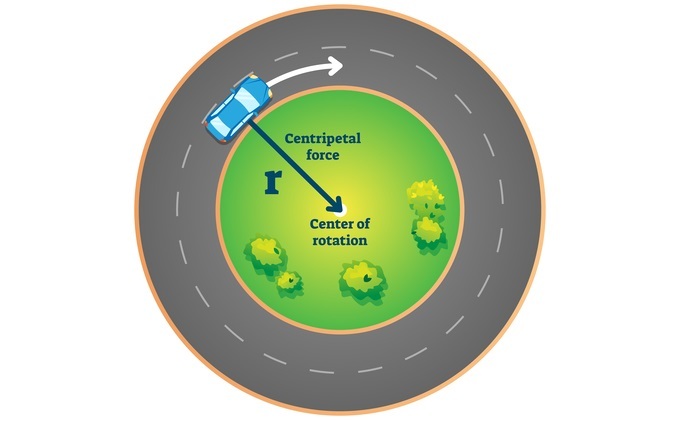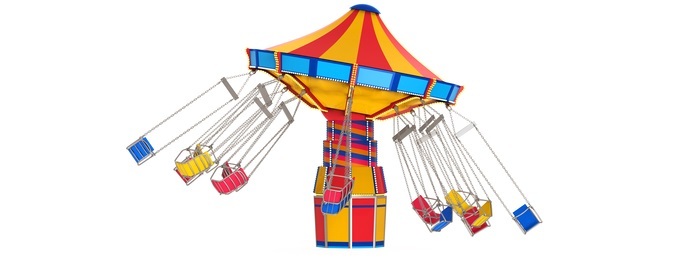
 Data Structure
Data Structure Networking
Networking RDBMS
RDBMS Operating System
Operating System Java
Java MS Excel
MS Excel iOS
iOS HTML
HTML CSS
CSS Android
Android Python
Python C Programming
C Programming C++
C++ C#
C# MongoDB
MongoDB MySQL
MySQL Javascript
Javascript PHP
PHP
- Selected Reading
- UPSC IAS Exams Notes
- Developer's Best Practices
- Questions and Answers
- Effective Resume Writing
- HR Interview Questions
- Computer Glossary
- Who is Who
Centrifugal Force: Principle, Formula and Applications
Introduction
Centrifugal force is a term used to describe the apparent force that acts on an object moving in a circular path. It is often referred to as a "fictitious" force because it does not have a physical origin, but rather is a result of the object's motion.
Despite its lack of a physical origin, the centrifugal force plays a crucial role in many aspects of our lives, from amusement park rides to the operation of centrifuges in laboratories. In this article, we will explore the principle behind centrifugal force, the formula used to calculate it, and its applications in various fields.

Principle of Centrifugal Force
The principle of centrifugal force is based on Newton's laws of motion. According to Newton's first law, an object in motion will continue to move in a straight line at a constant speed unless acted upon by an external force.
This means that an object moving in a circular path must be acted upon by an external force to maintain its circular motion. This external force is provided by the centripetal force, which acts towards the centre of the circular path.
The centrifugal force is the force that appears to act on an object moving in a circular path, in the opposite direction to the centripetal force.
It is a result of the object's inertia, which tends to keep the object moving in a straight line rather than in a circular path. The centrifugal force is not a real force, but rather a mathematical construct that describes the motion of the object in the circular path.
Formula for Centrifugal Force
The formula used to calculate the centrifugal force is derived from the principle of centrifugal force. The centripetal force is given by the formula ?
$$\mathrm{F = mv^2/r}$$
Where F is the force acting on the object, m is the mass of the object, v is the velocity of the object, and r is the radius of the circular path. The centrifugal force is given by the formula ?
$$\mathrm{Fc = -mv^2/r}$$
Where Fc is the centrifugal force, m is the mass of the object, v is the velocity of the object, and r is the radius of the circular path.
The negative sign in the formula indicates that the centrifugal force acts in the opposite direction to the centripetal force, away from the centre of the circular path.
Applications of Centrifugal Force
The centrifugal force has many applications in various fields, including physics, engineering, and medicine. Here are some examples of its applications ?
Centrifuges
Centrifuges are machines that use centrifugal force to separate substances based on their density. They are widely used in laboratories and industries to separate liquids and solids, such as blood samples and DNA strands.
A centrifuge works by spinning a container at high speeds, which generates centrifugal force that separates the substances based on their densities. The heavier substances are forced to the bottom of the container, while the lighter substances rise to the top.

Artificial Gravity
Centrifugal force can be used to simulate gravity in space stations and spacecraft. By rotating a spacecraft around its axis, centrifugal force can be generated that simulates the gravitational force experienced on Earth.
This can help to prevent the negative effects of prolonged weightlessness on the human body, such as muscle and bone loss. The concept of artificial gravity has been explored in science fiction for decades, and it may become a reality in the future as space travel becomes more commonplace.
Amusement Park Rides
Many amusement park rides, such as the Graviton and the Tilt-A-Whirl, use centrifugal force to create thrilling experiences for riders. In the Graviton, riders are strapped to the walls of a spinning cylinder, which generates centrifugal force that pins them to the walls.
In the Tilt-A-Whirl, riders sit in spinning cars that generate centrifugal force as they rotate around a central axis. These rides are popular because they provide a sense of weightlessness and disorientation, which many people find exhilarating.

Washing Machines
Washing machines use centrifugal force to remove excess water from clothes during the spin cycle. As the drum of the washing machine rotates, centrifugal force is generated that forces the water out of the clothes and towards the edges of the drum. This allows the clothes to dry faster and reduces the need for longer drying times.
Centrifugal Pumps
Centrifugal pumps are used to transport fluids in various industries, such as water treatment plants and oil refineries. These pumps work by spinning an impeller at high speeds, which generates centrifugal force that moves the fluid through the pump and towards its destination. Centrifugal pumps are efficient and reliable, and they are widely used in many different applications.
Racing Cars
Centrifugal force plays a crucial role in the performance of racing cars, particularly in corners. As a car goes around a corner, the tires generate a centripetal force that keeps the car on the track. At the same time, the centrifugal force generated by the car's momentum tends to push it towards the outside of the corner. Skilled drivers use this balance between centripetal and centrifugal forces to maintain control of their cars and achieve faster lap times.
Conclusion
Centrifugal force is a concept that is widely used in many different fields, from amusement park rides to laboratory equipment. Although it is not a real force, it is a mathematical construct that describes the apparent force that acts on an object moving in a circular path.
The formula for centrifugal force is derived from the principle of centrifugal force, which states that an object in a circular path must be acted upon by an external force to maintain its circular motion. Understanding the principle and formula of centrifugal force is essential for many applications, from designing amusement park rides to developing centrifuges for laboratory use.

